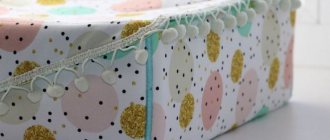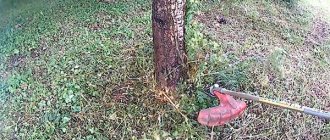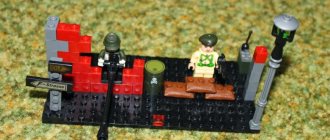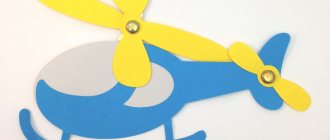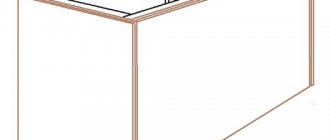During the gardening season, I like to make various devices that make growing fruit and vegetable crops simpler and easier. This time I made a hose reel with my own hands. To make such a design, you do not need to purchase additional materials; I found everything I needed in the garage. From the first day of using this device, I could not understand how I previously managed without it.
Source pikabu.ru
Tips for choosing
When purchasing a reel, you should pay attention to which hose will be used in the work.
It is more rational to use professional hoses for watering work; they have a good margin of safety (service life up to 12 years). Such products have the following advantages:
- they are flexible and easy to fold;
- bend around various obstacles at sharp angles;
- do not “freeze” from ice water.
When choosing a reel for winding, you should pay attention to the following parameters of the hose:
- section;
- length;
- what material the thing is made of.
As an agricultural implement, the hose and reel should be of the same brand, this compatibility ensures that no leaks will occur. When choosing, it is recommended to use the following criteria:
- Type of hose fixation on the wall.
- What wheels does the mobile model have?
- What type of mount does the stationary version have? They must be durable and withstand heavy loads.
- If the sleeves are long, then it makes sense to use a base that has larger diameters and widths.
- What material is the product made of?
- What primer and enamel is used to paint the device?
- What metal is the coil made of? Models made of stainless steel last longer, they can withstand heavy loads and are not subject to corrosion.
The supporting frame of the “trolley” must be wide and made of durable metal, in which case it will be stable and will not turn over under various loads when the hose is pulled. The wheels of the “cart” should be wide, this will ensure comfortable and smooth movement.
Smooth winding of the hose can be done using the handle, which should be comfortable.
How to choose a device
Reels can vary in purpose, materials and design.
The list contains the following models: wall-mounted automatic;
Wall reel
bobbins equipped with an axis for rotation;
Spool
mobile reels.
Mobile reel
Reels are made of plastic, metal, plastic and wood.
To select a device, you need to focus on the following factors:
- The length of the hose ranges from 20 to 100 meters. This indicator depends on the diameter of the coil.
- Type of device - it can be stationary or mobile. A coil from the first category can be mounted on the wall or placed on the floor. Automatic inertial boxes provide reliable fixation and quick rewinding of the hose after use. Karcher mobile reels are equipped with a trolley, so they can be easily moved around the land.
- Manufacturer - product quality must be confirmed by relevant documentation and consumer reviews.
- Cost of a hose reel (20, 50, 80, 100 m) – when using professional hoses, preference should be given to reels from the same price category. It is advisable that there is only one manufacturer. In this case, garden equipment can be used for 5-10 years. Karcher products are made from high-quality environmentally friendly materials. This avoids problems with curling, bending and exposure to cold water.
To create networks for irrigation, splitters and connectors are used. The design often includes special sprayers and tips. With their help, they protect the soil and green spaces.
Irrigation network
Hose reel design
I decided to install the reel permanently on a metal stand at a height convenient for reeling. Water from the water supply is supplied to the hose through a metal pipe, which is the axis of rotation of the coil. In order for the hose to be wound onto the reel, it was necessary to ensure that the axis rotated along with the reel, while the water pipe was rigidly fixed to the stand. To do this, I used, as on the factory reel, a quick-release hose connection. It allows the fitting and connector to rotate relative to each other, maintaining tightness.
I calculated the width and diameter of the drum based on the dimensions of the existing plumbing fitting, and took the dimensions of the coil a little larger than the factory ones. I got: the outer diameter of the coil - 38 cm; diameter of the drum for winding the hose - 20 cm; The drum width is 25 cm. This is enough to wind 15 m of hose.
At first I used plastic pipes as supply pipes, but then replaced them with metal ones, so the pipes are different in different photographs. Until the overall picture was formed, I assembled all the connections without a FUM, since during the preparation process I had to disassemble everything more than once.
Garden mat
To make it more convenient for you to wash vegetables and fruits collected from the garden, make a garden mat from a hose and lay it next to the outdoor tap. This rug is very easy to wash and dry.
PHOTO: sumogardener.com You can place a mat near the entrance to the house or in the area with the tap so that you can step on it while washing the harvested crops.
For work, use old hoses - if they are of different colors, then do not mix them up, you can make some beautiful and unusual rugs. You will also need several black plastic clamps. The optimal length of the clamps is 15 cm; it will be convenient for you to work with them. Additionally, use pruning shears - with its help it is very easy to cut off the extra “tails” after installing the clamps.
To make beautiful rugs, follow the instructions:
- Prepare the hoses for further use - rinse them with waste water and dry them thoroughly, this will make it easier for you to install the clamps in the right place to securely secure the structure.
- It is very easy to start weaving a rug; use cable ties to secure it. Round one edge of the mat and begin winding the hose to create a round or oval shape.
- Fasten the hoses in one row in 2-3 places so that individual sections do not stand out from the overall weave. While working, leave the tails of the clamps in the position in which they were secured, and only after you have finished weaving the rug can you cut off the excess using pruning shears. Cut the clamps carefully so as not to damage the rug.
If you don't like the color of the garden hoses, you can paint the rug using regular spray paint. Spray paint outside, away from plants. Once the entire mat is covered in paint, leave it to dry for 24 hours.
How to do it yourself?
For owners of garden plots, a watering hose is vital, and a reel for winding it up is also needed. You don’t have to buy it in a store; you can make a similar knot yourself, it won’t cost much. To make a homemade hose reel, you should consider what material is best to use. For the core, a piece of pipe, a steel strip, and a 22x5 mm fastener may be suitable. With the sidewalls things are somewhat more complicated. The material must be durable and not afraid of moisture and temperature changes.
Some craftsmen install lids from large basins or pans; this does not seem like a bad idea, the metal there is quite strong. Before starting installation, you should make drawings (they can be found on the Internet); it is recommended to indicate the exact dimensions of the future device in them. The bottom of old metal containers is cut off and an indent of a couple of centimeters is made from the edge. This option also seems quite acceptable.
Most often used for these purposes:
- old basins;
- containers from washing machines;
- large pots.
In total, a metal circle with a diameter of 35 cm is required for the side of the coil. A frame is created from a metal strip, and scraps of a thin-walled pipe are welded in the center. Sometimes fragments of PVC pipes are inserted for greater rigidity. A circle with a diameter of 142 mm is drawn in the center and 4 holes are drilled. To prevent kinks in the hose when attaching it to the axle, a fitting is used and a watering hose is attached to it. It’s even better to mount a tee, in this case there is “freedom of maneuver”; you can bend the hose at any sharp angle. Excess holes can be filled with foam or silicone.
At the exit, you can attach a handle to make quick winding.
It is best to cut the studs from “8” reinforcement. To attach the frame, you can use the same studs; fragments of PVC pipe are put on them as handles. A connector is pulled onto the hose, connected to the axle and wound. During winding, make sure that the hose does not twist. If everything is done correctly, the product will not be inferior in strength to a branded copy. You can also install wheels from the washing machine so that you can move the unit around the workshop. A hose with a diameter of 4 cm is quite suitable for such a reel. What is the benefit:
- the drum clears the workspace;
- mobility increases if the drum is attached to wheels;
- time for unwinding and installation is reduced;
- there are no creases;
- Convenient to store in any utility room.
The second option is a budget one; plywood is used, which can be coated with a special primer and then painted with oil paint. Such treatment will extend the service life of plywood by 3-4 times. The side walls of the future drum are cut in the form of circles from plywood (10 mm), diameter 435 mm. Holes (14 mm) are drilled in the center; they will be used to install the drum in them.
The axle can be made by taking a metal rod or pin with a diameter of 10 mm. Some margin in length should be taken into account; it should be greater than the distance between the sidewalls
It is important to correctly distribute the cross braces. They are made from slats (size 26x11 mm, 8 pieces in total)
The slats are located evenly around the entire circumference.
The slats are fixed with self-tapping screws using corners (two pieces per rail). The pusher lock is made using a special lining. This is a board (20 mm), in which a 12 mm hole is drilled, then the rectangular section is sawn in half. The resulting halves are attached to the outer sides of the sidewalls. The pusher is made of steel plate (thickness 2 mm), size 12x110 mm.
The pusher is secured with a screw that passes through the axle and is placed in such a way that the axle extends outward by 45 mm. The easiest way is to attach the stand; for this you will need scraps of board (14 mm wide), the gap between the supports is 45 mm. They are fixed with transverse wooden dies. The stand is fixed on a vertical plane using clamps, brackets, corners, etc.
Main stages of work
First of all, we cut out two identical circles from plywood - the side parts of the coil. We drill holes in the center, and then drill a few more holes for connection using wooden sticks.
Next, take one of the side parts and glue a piece of steel pipe with internal thread into the central hole.
From the outside we put a round piece of plywood on the pipe. On the inside, we install a quick-release connection.
We install a mount for the handle in the central hole in the second side part of the reel. At the next stage, we connect both sidewalls using wooden sticks.
Next, we make a housing from pieces of plywood and insert the assembled coil into it. We make a handle and install it in its place.
Finally, all that remains is to connect the hose from the compressor to the outer connection, and the hose for connecting the blow gun to the inner connection.
The surface of the plywood can be impregnated with mineral oil or painted - whichever you prefer. We screw a homemade mount to a wall or table, and then hang a hose reel on it.
For details on how to make a convenient wooden reel for storing a pneumatic (air) hose with your own hands, you can watch the video below.
Manufacturing the reel handle and its fastening
For the platform on which the metal handle will be attached, it is best to use a diamond-coated cutting disc. It is necessary to drill two holes in it for bolts, located one opposite the other. The distance between them must be measured and written down - it will also be useful in the manufacture of the handle itself, with the help of which the reel drum will rotate.
Working with the reel drum handle
You can use a metal plate to make a handle. It needs to be bent a little so that after screwing the handle on, it does not touch the canister. In the part that will be screwed to the drum, 2 holes are made, which should coincide with those drilled in the disk.
When this work is completed, it is worth painting the parts, adding aesthetics to the appearance of the product. In this case, a rich green color was chosen for the handle and canister body, and yellow for the disk platform.
- https://stroy-podskazka.ru/shlangi-polivochnye/vidy-katushek/
- https://masterclub.online/topic/17223-katushka-dlya-shlanga-svoimi-rukami
- https://homius.ru/katushka-dlja-sadovogo-shlanga-iz-staroj-kanistry.html
Varieties
The diameter of the reels can vary markedly, they can accommodate hoses of the following lengths (m):
- 25;
- 40;
- 50;
- 90.
Reels can also be mobile or stationary with inertial automatic units, on trolleys with rollers. While working, there are many reasons to wind the hose onto a reel without leaving your work station. This ensures the safety and ease of use of the equipment; such devices effectively extend the service life of the equipment. Hoses are used in a wide variety of areas:
- wash vehicles;
- water the garden plot;
- clean production equipment.
The environment actively affects the hose material; it is often aggressive, contributing to its rapid wear. A metal reel for a stainless steel hose is a device that effectively extends its service life. This is especially true for chemical, furniture, engineering and food production. In private households, a hose reel on wheels is also often extremely necessary in the warm season. Typical hose reels used in everyday life have the following length (m):
- 8;
- 10;
- 14.
If a longer hose is required, this automatically leads to an increase in the cost of the reel-drum. The most common hose diameter is 19 mm. Most often, this “caliber” is quite enough to solve even complex problems. The coil itself inevitably slightly reduces the dynamics of the movement of the liquid passing through the hose.
As an illustration, we can give this example: the pump generates a water volume of 92 liters per minute. If you place a hose on a one-inch reel, this will lead to a 15% loss of fluid flow. There are many varieties of different reels, the most popular of them are the self-twisting bobbins; such devices usually operate from an electric drive. An automatic coil, which is powered by a 220 volt network, is equipment that is easy to work with, its disadvantage is:
- is quite expensive;
- During installation, careful adjustment is required;
- requires stable mains power.
Electrically driven drums are also powered by a diesel generator. Control occurs using a remote control. Also very popular are floor-mounted stationary drums, which are equipped with special stands-legs that securely fix the device, preventing it from being moved around the workshop.
There is also a demand for wall-mounted devices that can be mounted using a reliable fastener at any point in the vertical plane. Spring “winders” have also become widespread throughout the world; they have a return mechanism, and there is a special locking spring that makes it possible to return the bobbin to its original position.
Benefits from purchasing a drum:
- friction of the hose on the floor is reduced to zero, which increases service life;
- the risk of falling and injury is reduced;
- the workplace becomes more functional;
- labor productivity increases.
When operating the reel, the following points should be taken into account.
- The reel can quickly deteriorate if it “deals” with substandard hose.
- If the hose is too long, it is more likely to break. The speed of water movement in the hose is rather large; the higher it is, the greater the chance that a rupture may occur in some place.
- It is always recommended to leave a long hose on the reel; it should be located evenly on it.
- Before purchasing a device, it is recommended to consult a specialist who has practical experience.
- You should buy a drum on trading platforms that have a good reputation.
- You should buy products from manufacturers that provide warranty periods.
Family separatism or I'm probably a bad mother.
I moved the child away. My “baby”, 24 years old, has finally moved into his own home. No one slams the front door in the dead of night anymore. Nobody makes wild trash talk in a room called “I’m so comfortable then I’ll get there.” Nobody can stand the constant “you control me” mentality. Cooking, washing and cleaning are 2 times less. The light in his room is not on, the sound of the next fight of some super champion in fighting without rules is not heard. The keyboard does not rattle under your fingers in non-stop mode. Crumbs, circuit boards, chargers, coins, jeans, socks, sweaters, towels, T-shirts, laptops, plates, cups no longer accumulate on the eternally disassembled bed, and among all this wealth, somehow sleeping - he, my little boy (always for me), my son, my little blood. On the day of his move, returning home from work by car, I honestly tried to feel sad. The brain helpfully tossed out phrases from the “left my native nest” series, the radio produced something heartbreaking, befitting the occasion. A single, stingy tear slowly crawled down my suffering face. Slowly. Slowly. Three minutes of suffering. Which evaporated into an unknown distance immediately when the front door was opened. A feeling of deep moral satisfaction entered the empty apartment with me. I did everything right. I provided you with a happy childhood, a carefree youth and a decent start into an independent life. I didn't sleep at night when you were sick. I comforted you when you were suffering. I rejoiced at your successes and secretly cried when you felt bad. And now . Go in peace, my son, and know that I will always be there when you need it. Here. Near. In the nest you left behind. I will live my life and wait for you to call. Or you'll fly. I wish you happiness, and therefore I let you go with a light heart. Go, my son, go. I love you!
Source
How to make a hose reel from what you have on hand
When the summer season begins, the watering season automatically begins. Regardless of what grows in the garden: flowers, vegetables in the beds, berry bushes or strawberries - all this requires regular watering for normal growth and ripening of fruits. Therefore, a hose reel, which allows you to store it in one place and prevents damage, plays an important role in this case.
How to make a reel without much difficulty?
A self-built reel will allow you to fold the irrigation hose in a way that is convenient for the gardener. This will also avoid contamination of the equipment and ensure its integrity. Such a reel will serve its owner for many years and will delight you with a long service life.
Many gardeners see a way out of this problem by purchasing a special reel. Very often, its cost is almost 3-4 times higher than the cost of irrigation devices. It has various accessories: a handle for easy carrying, stands, an adapter that rotates, and much more. But this is not always convenient, because the main task is to fold the hose compactly.
To make a reel with your own hands, you will need:
- sheet of plywood 35 by 35 centimeters - 2 pieces;
- bars with a size of 25 centimeters - 6 pieces;
- self-tapping screws - 12 pieces.
2 circles are cut out of a plywood sheet - their size should be 35-46 centimeters, the diameter directly depends on the size and type of hose. If it is 30 meters, then 35 centimeters is enough.
The plywood does not have to be in the shape of a circle; you can take square sheets and follow all the same steps to get the result. For convenience, handles are attached to the product, which will help you easily wind the hose so as not to get dirty during manual winding. It is recommended to coat the finished coil with protective varnish or paint.
What do you need to make a hose reel at home?
Hose reels are made from a variety of materials - it can be steel, plastic, wood, and many other types of materials that must reel the hoses around themselves for more convenient storage of this garden equipment.
It is not so difficult to buy a reel in a store, but in this case you will need to spend a lot of money, since even a reel for winding a plastic hose will cost a lot of money. Therefore, it is worth making every effort to create a coil yourself at home. In this case, an old five-liter plastic bottle and ingenuity will come in handy. You will also need:
- Metal pin.
- Two plastic legs with ears.
- Drill.
Almost everything you need can be found in the country and the process of assembling a reliable hose reel can be completed in half an hour.
The main thing to remember is that the created reel can last the entire summer season and even several more summer seasons then, if the reel with the holder is made conscientiously. The cost of the coil will be zero kopecks, so you should take its creation extremely seriously, since the project will help you save a thousand or more rubles, which can be spent on the benefit of your dacha.
Water supply to garden hose reel
After that, I finally connected the pipes and fittings inside the drum. Now I have already installed all the pipes on the FUM. To prevent the connections from unwinding during operation, I provided that when winding the hose, the reel would rotate clockwise and thus all threaded connections would work to tighten. The hose unwinds when it is pulled, so there is no load on the connections and they cannot unwind.
To ensure that when the hose is completely unwinded there is no load on the break at the point of its connection inside the drum, I screwed on the PVC coupling using a self-tapping screw and pushed the hose through it. Now she takes the jerks of the hose upon herself.
Additional Applications
By the way, I have now found out that since two barrels, old and new, are not far from each other, you can fill them with the same hose, simply throwing it from one holder to another, which is very convenient.
In addition, the same hose is also placed on a third low holder next to the bucket. In this case, the end of the hose acts as a spout for a regular water tap, since you can wash your hands over the bucket or, if necessary, you can quickly wash something else, for example, vegetables, fruits or berries.
When the watering season is over, all holders can be pulled out of the ground, cleaned and stored in the shed until the next season.
Well, that's all for me! Bye everyone and good luck in the struggle for the harvest!
How to do it yourself?
For owners of garden plots, a watering hose is vital, and a reel for winding it up is also needed. You don’t have to buy it in a store; you can make a similar knot yourself, it won’t cost much. To make a homemade hose reel, you should consider what material is best to use. For the core, a piece of pipe, a steel strip, and a 22x5 mm fastener may be suitable. With the sidewalls things are somewhat more complicated. The material must be durable and not afraid of moisture and temperature changes.
Some craftsmen install lids from large basins or pans; this does not seem like a bad idea, the metal there is quite strong. Before starting installation, you should make drawings (they can be found on the Internet); it is recommended to indicate the exact dimensions of the future device in them. The bottom of old metal containers is cut off and an indent of a couple of centimeters is made from the edge. This option also seems quite acceptable.
Most often used for these purposes:
- old basins;
- containers from washing machines;
- large pots.
In total, a metal circle with a diameter of 35 cm is required for the side of the coil. A frame is created from a metal strip, and scraps of a thin-walled pipe are welded in the center. Sometimes fragments of PVC pipes are inserted for greater rigidity. A circle with a diameter of 142 mm is drawn in the center and 4 holes are drilled. To prevent kinks in the hose when attaching it to the axle, a fitting is used and a watering hose is attached to it. It’s even better to mount a tee, in this case there is “freedom of maneuver”; you can bend the hose at any sharp angle. Excess holes can be filled with foam or silicone.
It is best to cut the studs from “8” reinforcement. To attach the frame, you can use the same studs; fragments of PVC pipe are put on them as handles. A connector is pulled onto the hose, connected to the axle and wound. During winding, make sure that the hose does not twist. If everything is done correctly, the product will not be inferior in strength to a branded copy. You can also install wheels from the washing machine so that you can move the unit around the workshop. A hose with a diameter of 4 cm is quite suitable for such a reel. What is the benefit:
- the drum clears the workspace;
- mobility increases if the drum is attached to wheels;
- time for unwinding and installation is reduced;
- there are no creases;
- Convenient to store in any utility room.
The second option is a budget one; plywood is used, which can be coated with a special primer and then painted with oil paint. Such treatment will extend the service life of plywood by 3-4 times. The side walls of the future drum are cut in the form of circles from plywood (10 mm), diameter 435 mm. Holes (14 mm) are drilled in the center; they will be used to install the drum in them.
The axle can be made by taking a metal rod or pin with a diameter of 10 mm. Some margin in length should be taken into account; it should be greater than the distance between the sidewalls
It is important to correctly distribute the cross braces. They are made from slats (size 26x11 mm, 8 pieces in total)
The slats are located evenly around the entire circumference.
The slats are fixed with self-tapping screws using corners (two pieces per rail). The pusher lock is made using a special lining. This is a board (20 mm), in which a 12 mm hole is drilled, then the rectangular section is sawn in half. The resulting halves are attached to the outer sides of the sidewalls. The pusher is made of steel plate (thickness 2 mm), size 12x110 mm.
The pusher is secured with a screw that passes through the axle and is placed in such a way that the axle extends outward by 45 mm. The easiest way is to attach the stand; for this you will need scraps of board (14 mm wide), the gap between the supports is 45 mm. They are fixed with transverse wooden dies. The stand is fixed on a vertical plane using clamps, brackets, corners, etc.
A “landing” groove should be created at the base of the supports so that the unit does not jump off; a special lock is made, which is cut from a steel strip (thickness 2 mm, width 20 mm). After production, the drum should be tested in the field. Before starting work, it is recommended to carefully check all joints and components; there should be no play or poor fasteners. If everything is fine, then you can attach the hose. The drum can also be made from PVC pipes; for this, only a special welding unit for PVC products is needed on the farm. Typically 30 mm pipes are used. The advantage of this product:
- not subject to corrosion;
- has good strength;
- It weighs little and is easy to transport.
Making the holder
Well, now I’ll show you how to make such a holder. To make it, we will need the following accessories:
Materials and fasteners:
- A wooden plank 2-2.5 cm thick, 4 cm wide, and 80-90 cm long.
- A piece of steel angle 25x25 mm, 40-45 cm long.
- Two wood screws 4x20 mm.
Tools:
- Drawing and measuring tools (pencil, tape measure and square).
- A jigsaw with a file for curved cutting.
- Electric drill-screwdriver.
- Metal drills with a diameter of 4 mm and 8 mm.
- Screwdriver bit RN2, for driving screws.
- Sandpaper.
The procedure for making the holder
First, we saw off the board to the required length, and at one of its ends, we made a curved cut like this for putting on the wire clamp of the hose.
Next, we drill two through holes with a diameter of 4 mm in the steel corner. We make one hole at the very end of the corner, and the other after about 20 cm.
Then, using a metal drill with a diameter of 8 mm, we countersink these holes for countersunk screw heads.
Now all that remains is to screw the corner with screws to the bottom of the board.
And now our holder is ready!
However, it is still highly advisable to paint it. To make it clearly visible, I chose yellow paint.
And now our holder is finally ready!
Materials and tools
To make a homemade reel you will need the following tools and materials:
- Plywood (thickness 9 mm).
- Dowels.
- 90 degree bends for the coil base.
- ¾ pipe.
- ½ pipe.
- Hose with quick release for connecting the reel to the water tap.
- Welding machine.
- Drill.
- Bulgarian.
It is also advisable to use a jigsaw to cut circles from plywood, and to attach wooden elements - self-tapping screws with a length of at least 30 mm.
Reel steering wheel
I wanted to make a handle for rotating the reel in the form of a ship's wheel; It looks good, and it’s a toy for my son. The design of the steering wheel is the same as that of the cart wheel that I already had to make, only with handles.
The wheel has 8 spokes and, accordingly, its rim consists of 8 elements - “jambs”. To make the hub, a material made of hard deciduous wood was needed, since the entire load during rotation falls on it. I had a suitable branch of walnut, the wood of which has the desired density. The knitting needles were made from pine. Their overall diameter at the ends was made smaller than the circumference of the hub, so that there was no need to suffer when assembling the wheel. For me this diameter is 18 mm.
The most difficult thing was to correctly calculate the parts of the wheel rim - the “jambs”. I used my own formulas for this, and as a result I got the following values (with a rim diameter of 48 cm and a thickness of 6 cm):
- length of the inner side - 15 cm;
- length of the outer side - 20 cm;
- the angle between the large base and the side edges is 67.5 degrees.
After preparing the segments, I drilled blind holes in them for the knitting needles and handles. I selected the diameter so that the spokes fit tightly, but so that they do not need to be driven in, otherwise it would be difficult to glue an even wheel. When everything was ready, I assembled the steering wheel dry and numbered the parts. For additional rigidity, I decided to strengthen the adhesive connection using 8 mm dowels.
Then I assembled everything with glue (I used thick glue so that it would not be absorbed into the wood very quickly). I lubricated the ends of the segments with glue on both sides, otherwise, while all the parts of the wheel fall into place, the glue may dry out. After the glue had dried, I drew a circle on the outside and cut it using a homemade jig saw. After trimming, I sanded the joints of the segments and the unevenness of the circle, and glued in the handles.
Now it was necessary to attach the steering wheel to the spool axis from the side on which the coupling with the plug was installed. It was decided to glue a plug into the steering wheel hub. I did this using Cold Welding glue. Since I made the holes for the axle with a pen, side holes appeared inside the hole for the plug. They served as additional fastening, and the quick setting and consistency of “Cold Welding” made it possible to glue and align everything in place.
After the glue had set, I cleaned up the irregularities and coated the steering wheel with two layers of varnish. Then he inserted a rubber gasket inside the plug and screwed the steering wheel into place, additionally winding the FUM.
The hose reel is ready - you can open the water and use it. There are many advantages in my design: the reel rotates easily, its dimensions allow the hose to be extended, there is no need to bend over when winding the hose, the design is rigidly fixed and does not jump when used. I'm pleased with the result.
There are also inconveniences. For example, when unwinding, you can get the hose caught on the steering wheel handle - if you pull too far to the side. It would be possible to attach a guide rotary roller at the bottom of the post, but my reel is fixed in such a place that it is impossible to pull the hose in this direction, so I did without a roller.
Reference by topic: Do-it-yourself support for gartering bushes
Homemade garden hose reel from Knauf profile
I'm tired of manually winding up garden hoses at the dacha. One hose is 40-45 meters. The main watering one is 3/4. The other is 15 meters with a pump for pumping out the well.
Turning hoses back and forth every time is no longer a joy.
A ready-made reel for such purposes costs, depending on the brand and quality, from 1,500 rubles. You can find it cheaper - I saw it for 860 rubles, but the quality is disgusting.
I decided to use Knauf guides as materials - fortunately I have several of them left - ceiling guides 28x27 and rack-mount guides 60x27.
I happened to have a couple of pieces of 28x27 guides, 154 cm long. I decided to use them as the “rim” of the reel wheel.” I decided to leave 2-3 cm on each side for overlap and fixation. The remaining distance is divided into equal 8 segments to make an octagon. I decided not to bother with the circle.
As a result, the side of the octagon turned out to be equal to 185mm and there was 35mm left for the overlap. In this version, the “diameter” of the coil will be 440-450mm.
From the rack profile for the resulting octagon, I cut a couple of cross members. In one of them I cut a groove 60 mm wide, bent the “ears” to the side and made a cross.
The fastening was done using sharp “bug” screws 9mm long.
Then I put a “rim” made of a 28x27 profile on these crosspieces and secured them with the same screws. At the bend points where the profile intersected, I made additional fastenings with a cutter. just in case.
On the back side of the cross I made an insert in the center from pieces of the same profile. I just cut off the side a little so that the profile “moved” inside the profile and secured these inserts on the sides with the same “bugs” screws. You can see this in the photo above.
Four crossbars for connecting the resulting “steering wheels” were made from the same rack profile by Knauf. I used pieces 320 mm long. I made 25mm cuts on each side and then bent the edges into which I then screwed “bug” screws. I bent all the bent edges of the rack profile that were in the way and straightened them with a hammer. If necessary, I cut it with metal scissors.
I tried to bend it in two ways - you can see it in the photo. By and large, it doesn’t matter how you do it. IMHO
B made center marks and drilled through holes with a diameter of 10 mm. I also marked the future central part. I chose a distance of 160mm.
Next, I attached all the resulting crossbars to their seats.
After which I fixed the second “wheel”.
In one corner of the 28x27 profile I drilled a small hole for rotating it on the stand in the future. During a test test, I rotated the coil with a short screwdriver.
To test the coil, I drilled a hole slightly larger than 10mm in birch and screwed a 10mm pin into it. I put a reel on it. Then I will cut down the birch.
The reel turned out to be quite rigid and not heavy. Perhaps it would have been heavier from plywood.
A 3/4 garden hose with a length of a little more than 40 meters was wound onto a reel. Since I was a little late with the weather and did not have time to remove the hose earlier, the water in it froze and I had to reel in the hose with water. This affected the ease of rotation of the reel. I had to rotate it by hand. The pin bent a little.
When removing the coil from the stud, the edges of the profile clung to the thread of the coil. Then I will either need to screw the block inside or use a pipe - I’ll look later.
Overall I'm pleased with the result. All that remains is to make a normal stand and a couple more smaller coils - fortunately there is still a profile.
Below you can watch a couple of videos.
Manufacturers and models
There are several brands that have proven themselves to be the best. Product prices are quite high, but the coils have a long service life, they are reliable and work flawlessly. These include the Gardena and Hozelock brands.
Gardena reels have automatic rewinding, the hose does not twist or “break”. The reel support is reliable and the structure is stable. The system has compact parameters and has an ergonomic hose handle. The product can be taken, for example, on a hiking trip, used in summer cottage work, or used in the production workshop of a small enterprise.
The Hozelock reel is designed for hoses that can withstand increased pressure. The reel is made of modern innovative materials that can work in aggressive environments. Models can have either inertial or automatic winding. Drums can be moved on platform trolleys, and there are also stationary structures. Before purchasing, it is recommended to carefully familiarize yourself with the performance characteristics and see how the device works in various environments. For example, in the chemical food industry the following material is used:
- durable PVC;
- stainless steel
Hozelock drums in terms of price/quality, such devices are very acceptable.
Making a hose reel with your own hands - photo
1. The pipes inside the drum supply water to the hose and are the axis of rotation of the reel.
2.When choosing the width and diameter of the drum, I proceeded from the need for access to the pipes during installation and operation.
3. I took the dimensions of the reel a little larger than the factory ones so that the length of the hose could be increased.
4. The dimensions of the blanks for the bracket were measured locally, taking into account the gaps and thickness of the washers.
5.When gluing the bracket, all available clamps were used.
6. After the glue had dried, I cut off the protruding parts, sanded them and drilled holes for the axle.
7.Before final assembly, I coated the bracket with acrylic varnish.
8.The metal connector, when connected to the supply pipe, allows the coil to rotate without breaking the seal.
9.The fitting for connecting the hose was assembled at an angle so that it does not bend. An additional plugged tap inserted into a hole in the thick drum rack fixed the coil on the axis.
10. External pipes for water supply are connected.
11.To make sawing the steering wheel elements easier, I equipped the saw with a small “bed” with a side stop.
12.The wheel consists of 8 elements, the hub is carved from a hazel branch, and the spokes are from pine.
13. Holes for dowels were made closer to the inside of the wheel elements. After rounding the outer perimeter of the octagon, they will be in the center.
15. To fasten the wheel when gluing, I used a belt tie for the frames, from which I took out the inserts for the corners and clamps.
16. Steering wheel with a glued plug.
Preface
It’s unlikely that you are a succulent breeder if you didn’t miss the title of the article. In our latitudes, anyone who wants to plant a garden must take care of proper watering of the plants. The marathon with a watering can, in the old fashioned way, let the mother-in-law do it, and for your beloved wife you will have to buy a watering hose on a reel.
Making a reel with your own hands
The device can be made from various materials: iron, plastic or wood. We will consider the option of a wooden reel, since this is a very cheap and accessible material, but proceed in stages:
- we buy the following materials at a hardware store: a sheet of plywood, about two dozen screws for wood, a plastic pipe, a 1.5 m long block - you can ask it to be cut into three parts of 25 cm and one of 75 cm, so that there is less hassle;
- We cut out two circles from plywood with a diameter of approximately 35-40 cm, although it all depends on the length of the hose - the longer it is, the larger the plywood sides should be;
- We make a stand from the bars: we attach the longest beam to the bottom of the U-shaped structure from short bars so that it stands firmly on the ground;
- We attach the sides to the pipe using self-tapping screws - it will serve as a drum;
- then we fix the finished coil on the rack using the same self-tapping screws;
- For convenience, you can make a handle that is attached to the side.
And finally
In a similar way, you can make a hose reel with your own hands from plastic pipes, which are used instead of dowels between plywood circles. In this capacity, you can also successfully use cuttings from garden tools if they are cut into equal lengths. In general, there are many DIY hose reel drawings and ways to implement similar projects, but I chose the option described above, which is, in my opinion, the simplest and most effective, which has been proven through real tests of such a design.
Question
Write in the comments if you have made similar coils from improvised materials, what materials were used and what the result was?
Without which you cannot get a harvest - life-giving moisture
Seriously, don't be fooled by the small area of the land. It will not be possible to save on such necessary equipment as a garden hose on a reel. Bitter onions, cracked carrots, small cabbage heads, oddly shaped cucumbers - all this is the result of insufficient soil moisture.
Move the mechanism to the right place, unwind the hose, connect to a water source, turn on the water, water the garden, wind up the hose, put the equipment in storage... Follow these extremely simple instructions and keep your spine healthy for many years. Such a garden is a pleasure, you must agree!
A more practical solution (for a much loved wife) is to purchase a reel on wheels. This design is completely easy to use, because thanks to the wheels, the mechanism does not need to be lifted - convenient for very young and elderly gardeners, pregnant women. There are models suitable for use on land plots of different sizes.
Modern holder
If you don't have enough space in your home, opt for this idea. A modern hose holder will come in handy. You just need to install the bracket on the wall. This hanger looks very neat and modern. If you choose a wooden holder, you can paint it any color you want.
“I always wanted my own house on the river”: Stas Piekha shared the secrets of his new purchase
Husband with oddities: Vodianova’s mother spoke about her relationship with her son-in-law
You can change the upholstery on a chair for pennies: I spent 55 rubles on this transformation
Reel Drum Assembly
Now you need to drill holes in the plastic plug, using the disk as a template. After this, all three parts (drum, disk, handle) are assembled together and tightened using bolts and nuts. It makes sense to install washers with wide sides on the inside - this will make the connection more reliable.
Assembling a drum using bolted connections PHOTO: youtube.com
Drum finishing
Next, you should consider the passage of the hose through the wall of the drum. To do this, at the edge, closer to the plug with the handle screwed to it, you need to make a hole corresponding to the diameter of the hose. A drill with a wood pen installed in it will help with this. Plastic is a fairly soft material, and therefore there will be no problems with drilling it. After completing this work, all that remains is to assemble the device for winding and storing the hose, after which it can be used for its intended purpose.
Using a wood pen, a hole is drilled through which the hose will pass. PHOTO: youtube.com
Final part
Without a doubt, this type of hose storage is more convenient. The entire length is not always required for watering, but here you can extend it just a little and start working. And winding back will be much easier.
This way it’s much easier to store the hosePHOTO: youtube.comYou can unwind it quite a bit and connect itPHOTO: youtube.com
Watch this video on YouTube
The Homius editors invite home craftsmen and craftsmen to become co-authors of the “Stories” section. Useful first-person stories will be published on the pages of our online magazine.
PHOTO: Workshop Diy YouTube channel
Previous STORIESFence made of polymer-wood composite: self-assembly Next STORIESWhen hands are hooks: second life of an old mug
